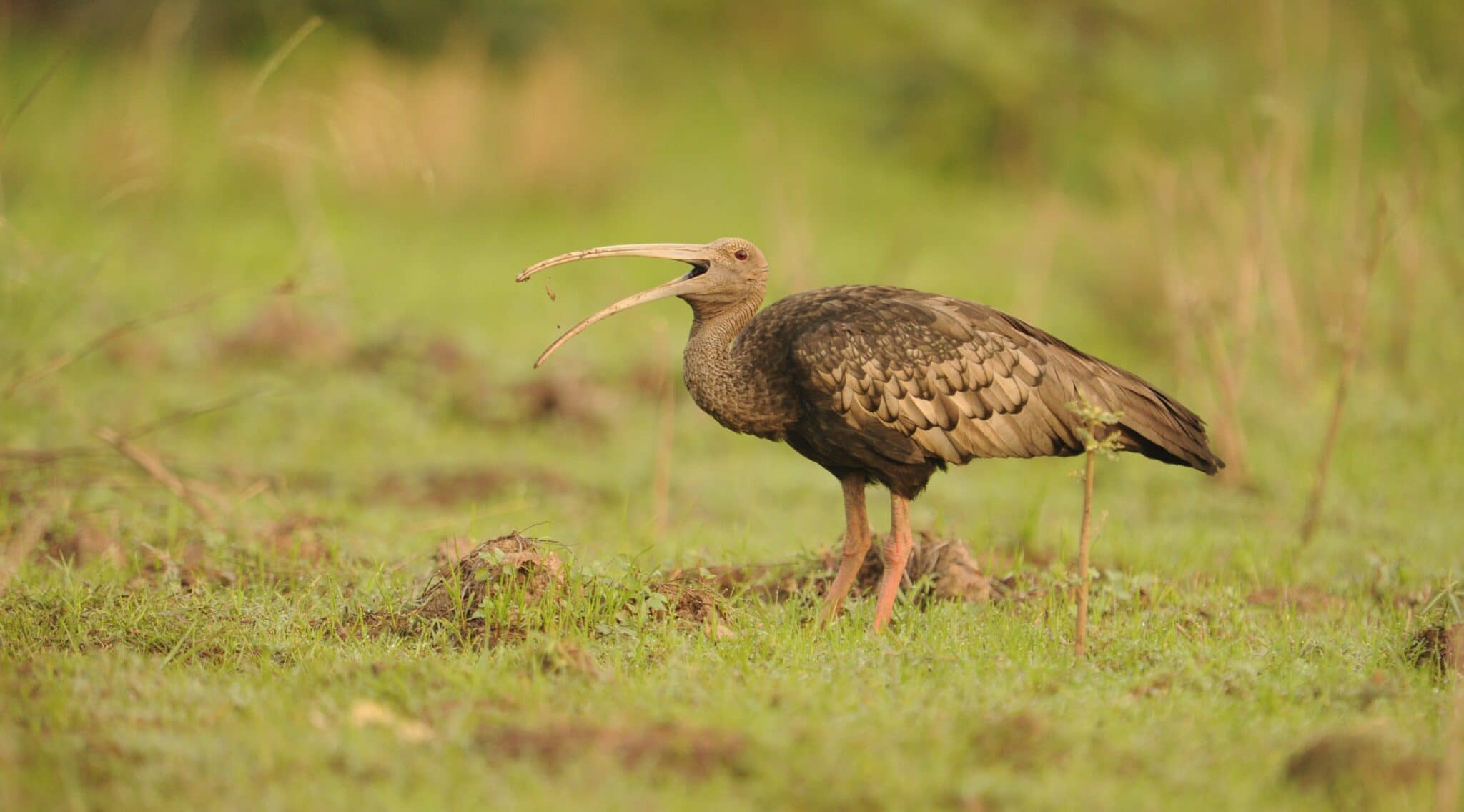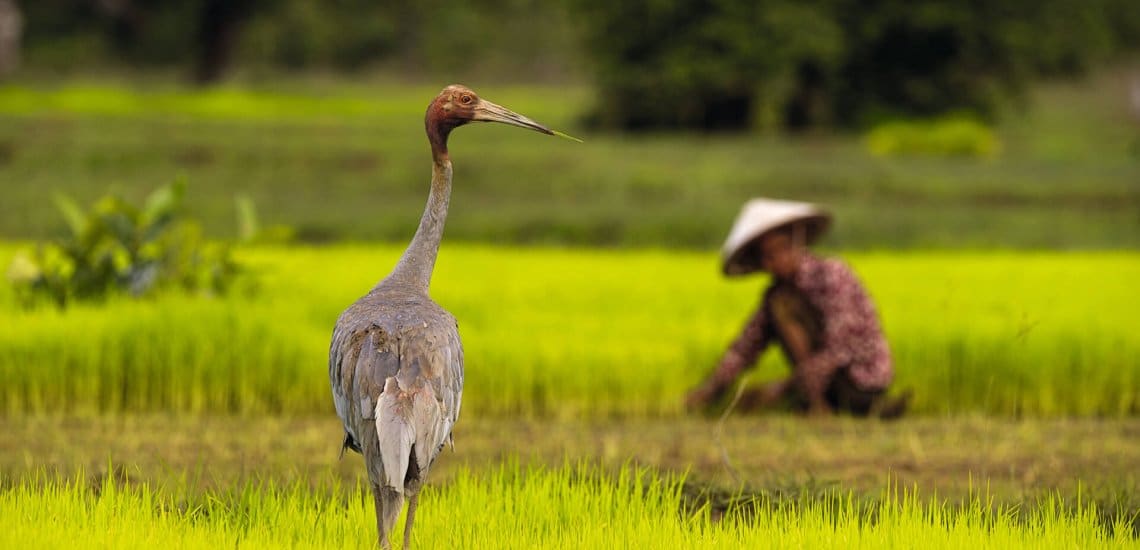Cultivating for cranes: Kampong Trach, Cambodia
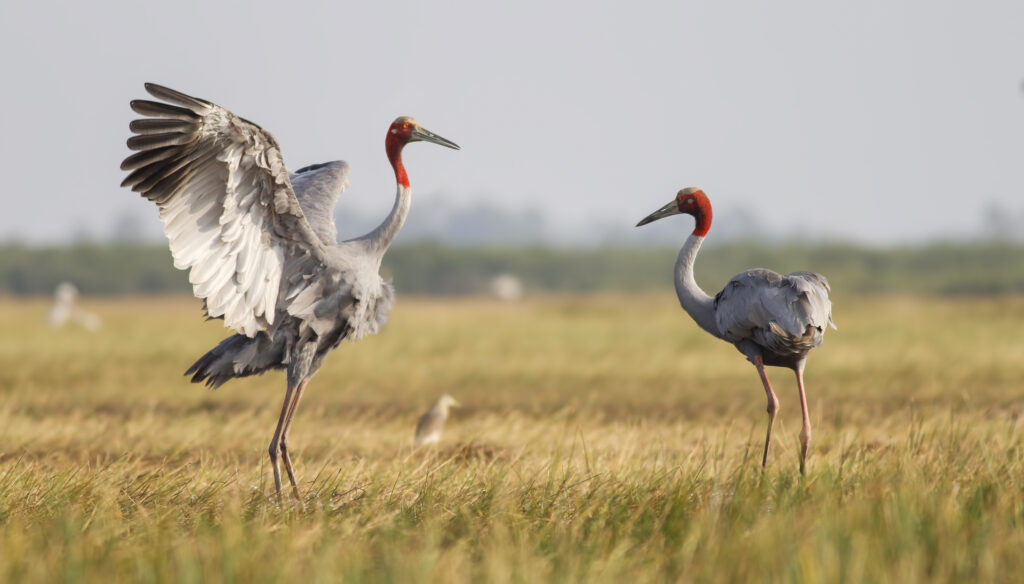
The wetlands of Kampong Trach are one of Cambodia’s most important sites for wintering Sarus Cranes, however decades of agricultural encroachment and pollution have left it highly threatened. BirdLife partner NatureLife Cambodia have been working closely with farmers to turn things around in a project that has shown promising early results for this enigmatic species.
By Liam Hughes
Header Image: Sarus Crane is the world’s tallest flying bird © bee-eater/Shutterstock
Grasslands once stretched across vast swathes of the Mekong Delta in South- East Asia, flooding annually to leave pockets of wetlands that support important waterbird populations. However, decades of extensive conversion to agriculture, and more recently aquaculture, has left an ever-dwindling number of intact patches of habitat.
South-eastern Cambodia’s Kampong Trach is one of these. Straddling the border with Vietnam, this Important Bird and Biodiversity Area (IBA) consists of more than 1,000ha of seasonally inundated grasslands interspersed with Melaleuca scrub. Home to a range of waterbirds, including Oriental Darter and Black-tailed Godwit (both Near Threatened), it is most renowned for its globally important population of Sarus Crane (Vulnerable).
The largest of the crane family, the species sports a bright red head that contrasts sharply with its grey body and, combined with its spectacular courtship ritual, is one of Asia’s most recognisable waterbirds. Although in decline across its range, the South-East Asian subspecies, sharpii, is in particular trouble and has been extirpated in Thailand, Malaysia and the Philippines.
Its population now largely persists in Cambodia, where a national census in 2022 found just 156 birds. Kampong Trach and the nearby Boeng Prek Lapouv – another IBA in danger that is also a refuge for Bengal Florican (Critically Endangered) – are home to the country’s most important wintering populations of Sarus Crane.
Fortunately, much of the IBA is formally protected as part of the Anlung Pring Protected Landscape. However, the wetland’s small size – compounded by regular encroachment from surrounding farms that also use high levels of polluting chemical pesticides – has left it highly threatened.
Sadly, these threats are reflected in the Sarus Crane population. Up to 150 of these enigmatic birds once fed in Kampong Trach and its adjacent rice paddies. However, this figure has steadily declined in recent years, and BirdLife partner NatureLife Cambodia’s 2021 annual census of the species recorded a new low, with fewer than 100 cranes in the IBA.
The organisation quickly stepped into action, and alongside Cambodia’s Ministry of Environment – which manages the Anlung Pring Protected Landscape – has launched an imaginative new initiative. At the heart of its efforts are training and encouraging farmers surrounding the IBA to use bird-friendly farming methods, including growing native varieties of rice, reducing the use of chemical fertilisers and agreeing not to encroach on the protected area.
Known as ‘Crane Rice’, farmers that sign up are then able to sell their harvest for a premium. Although the scheme only began in 2022, following a successful pilot project the year before, 100 farmers are already participating, and the area of healthy Sarus Crane habitat within the IBA has increased by almost a third.
“Based on 2022 monitoring results, Anlung Pring attracted more than 50% of [the] total Sarus Crane population in Cambodia and Vietnam, and 82% of them foraged in crane rice fields. This is a good sign that [the] Crane Rice scheme [is] contributing to addressing food shortages,” said Vorsak Bou, CEO of NatureLife Cambodia. “Collaborating farmers [are also] happy to be involved with the project – it not only helps Sarus Crane but also contributes to local livelihoods,” he added.
NatureLife Cambodia has also trained various community members to patrol the IBA’s key wetland sites alongside park rangers and has run various workshops and events with local schools and communities to raise awareness of the importance of healthy wetlands. Promisingly, there are already signs that the Sarus Crane population in the area is beginning to stabilise, offering fresh hope for this iconic species.
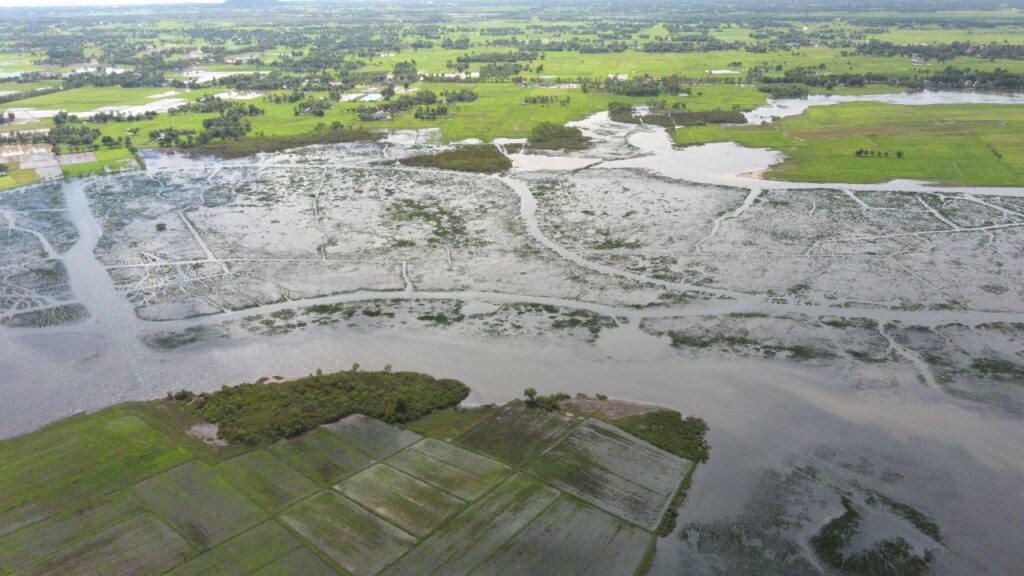
Species that will benefit
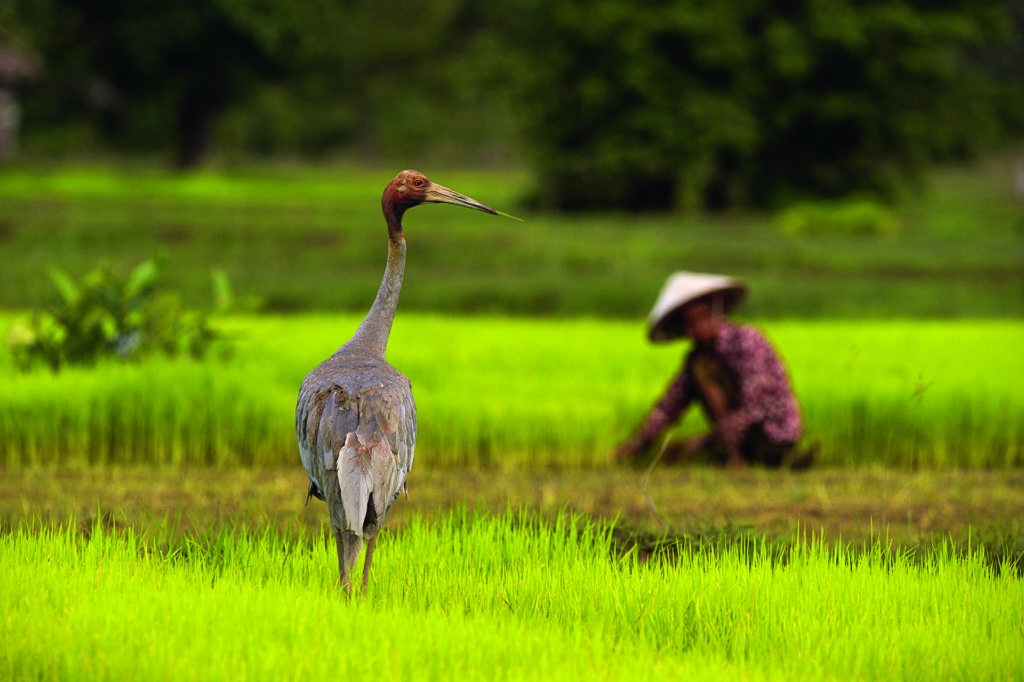
Sarus Crane (Antigone Antigone)
Standing at close to six feet, Sarus Crane is the world’s tallest flying bird. Unlike other members of its family, the species is not a long-distance migrant, although some populations – such as those in Cambodia – travel short distances to their breeding grounds. During the breeding season, pairs perform an elaborate courtship ritual, calling loudly as they strike a series of spectacular, dance-like poses.
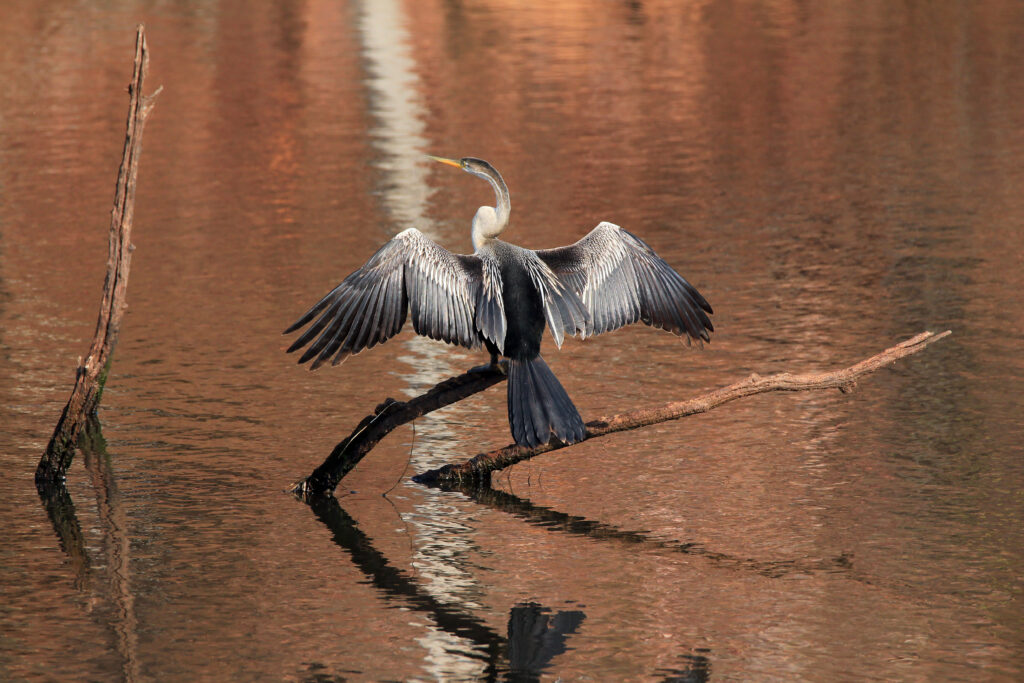
Oriental Darter (Anhinga Melanogaster)
Inhabiting inland wetlands across South and South-East Asia, Oriental Darter was once abundant, with reports from the 1960s describing flocks of several thousand birds flying over the Mekong River. However, as with many Asian waterbird species, habitat loss, pollution, human disturbance and hunting have driven relatively rapid declines, and the species is now considered Near Threatened.
